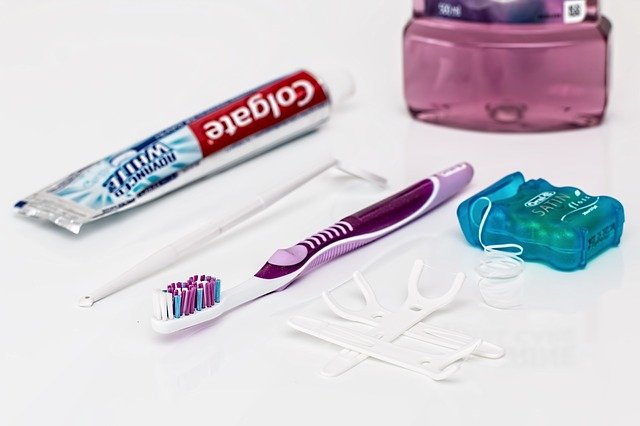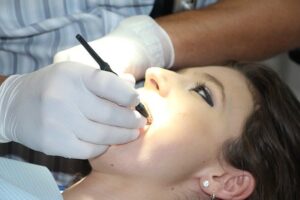Call 408-257-5950 • 19000 Cox Avenue, Suite A • Saratoga, CA 95070
What are the Common Symptoms of Tooth Decay?

Tooth decay is a common dental condition, and it can have an impact on one’s overall health if left untreated. There are many things that can cause tooth decay. If you have any symptoms of tooth decay, it’s important to seek treatment from your Saratoga, CA dentist as soon as possible. Treating cavities early on can help prevent them from getting worse. The earlier they are treated, the easier they are to repair. You may be able to avoid more extensive procedures such as a root canal or a tooth extraction.
What is tooth decay?
Dental caries, or tooth decay, occur when erosion occurs on the enamel of a tooth. When the enamel erodes, bacteria can reach the dentin underneath. Some foods and plaque can eat away at sensitive enamel and make a tooth prone to decay. Once the enamel is worn, bacteria easily infiltrates the tooth’s dentin and causes cavities.
What causes tooth decay?
A number of factors can contribute to tooth decay. Usually, it’s a combination of factors that may include:
- Bacteria
- Exposure to sugary foods and drinks
- Poor oral hygiene
Over time, bacteria build up on your teeth and create a film called plaque. As plaque builds up, it produces an acid that begins to break down the outer layer of the teeth. Once the enamel starts breaking down, damaged areas start to develop. This leads to small holes in the teeth. Once these tiny openings appear, more bacteria are allowed to enter the tooth. This is the process of tooth decay, and it only gets worse if it is untreated. Routine exams at Saratoga Dentistry give Dr. Araldi the chance to examine your teeth for signs of decay. If decay is caught early on, treatment is more successful and prevents extensive damage.
Who is at risk for tooth decay?
Quite simply, everyone is at risk for tooth decay. Some of the factors that contribute to dental caries can be controlled, but some cannot. Some of the things you can control include practicing good daily oral hygiene and using fluoride toothpaste. You can also limit the consumption of sugary foods and alcohol. Avoiding tobacco products will help prevent dental problems too.
Some of the risk factors you cannot control include respiratory conditions like asthma that tends to dry out your mouth, and your age, of course.
You can improve your oral health and reduce your risk for dental problems, including cavities, by brushing your teeth twice every day, flossing once daily, and using fluoride products like toothpaste and mouthwash. Routine professional cleaning can help prevent plaque buildup. For kids, dental sealants can be used to protect their teeth from cavities.
What are the symptoms of tooth decay and cavities?
Sometimes, cavities do not have any noticeable symptoms. But for most people, there are a few symptoms that may help you know it’s time to visit the dentist for an exam and treatment. Some of the most common symptoms of tooth decay include:
- Hot and cold sensitivity. When decay infiltrates a tooth, the dentin is exposed. This can cause more sensitivity. You may notice one or two teeth that feel more sensitive than normal. If you drink something hot or cold, you may notice pain in a specific tooth. This can be a sign of a cavity.
- Lingering sensitivity to sweets. Once the enamel is damaged, the sensitive inner layer of the teeth can become exposed. Any kind of sweet food or drink can cause pain that lasts for some time.
- Toothache. A tooth that has a cavity may begin to hurt. You may experience sharp pain when you bite down. You may just notice that it hurts when you are brushing or flossing.
- Staining on a tooth. As cavities start to form, they often cause dark spots on the surface of the teeth. Over time, the spot will get darker. If you notice any new discoloration, schedule an exam with Dr. Araldi.
- A hole or a pit in your tooth. When bacteria remain on a tooth they will eventually eat into the tooth. You may start to notice small holes or pits in the enamel. If you notice a hole, you will know a cavity is forming and you need to see your Saratoga dentist for a filling.

What are the treatments for tooth decay and cavities?
Once the dentist identifies the type of cavity you have, a treatment option can be recommended. There are a variety of treatment options depending on the cavity’s severity. They include:
- Fluoride Treatment. In the very early stages of decay, fluoride treatment can help restore enamel.
- Dental Fillings. After dental caries progresses past the early stages, fillings are often the treatment of choice. The affected area is removed and the tooth is filled with a tooth-colored resin, amalgam, or porcelain.
- Dental Crowns. Crowns are often the preferred treatment for severely decayed teeth.
- Root Canal. If the decay spreads into the inner layers of the tooth, Dr. Araldi may recommend a root canal that removes the diseased pulp. Once the pulp is removed, a filling is used to replace it.
- Extraction. In the most severe cases of decay, tooth extraction may be the only option.
Contact Us!
Routine exams and cleanings are essential for helping to prevent tooth decay and dental caries. If you have tooth sensitivity or any other symptoms of tooth decay, don’t hesitate to schedule an appointment with our offices. Is it time for your routine checkup? Give us a call or fill out our online form to schedule an appointment today!
